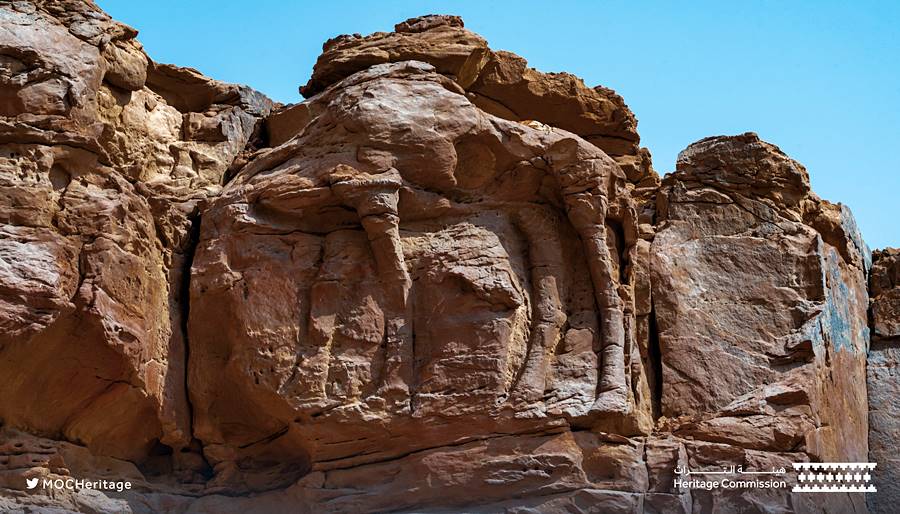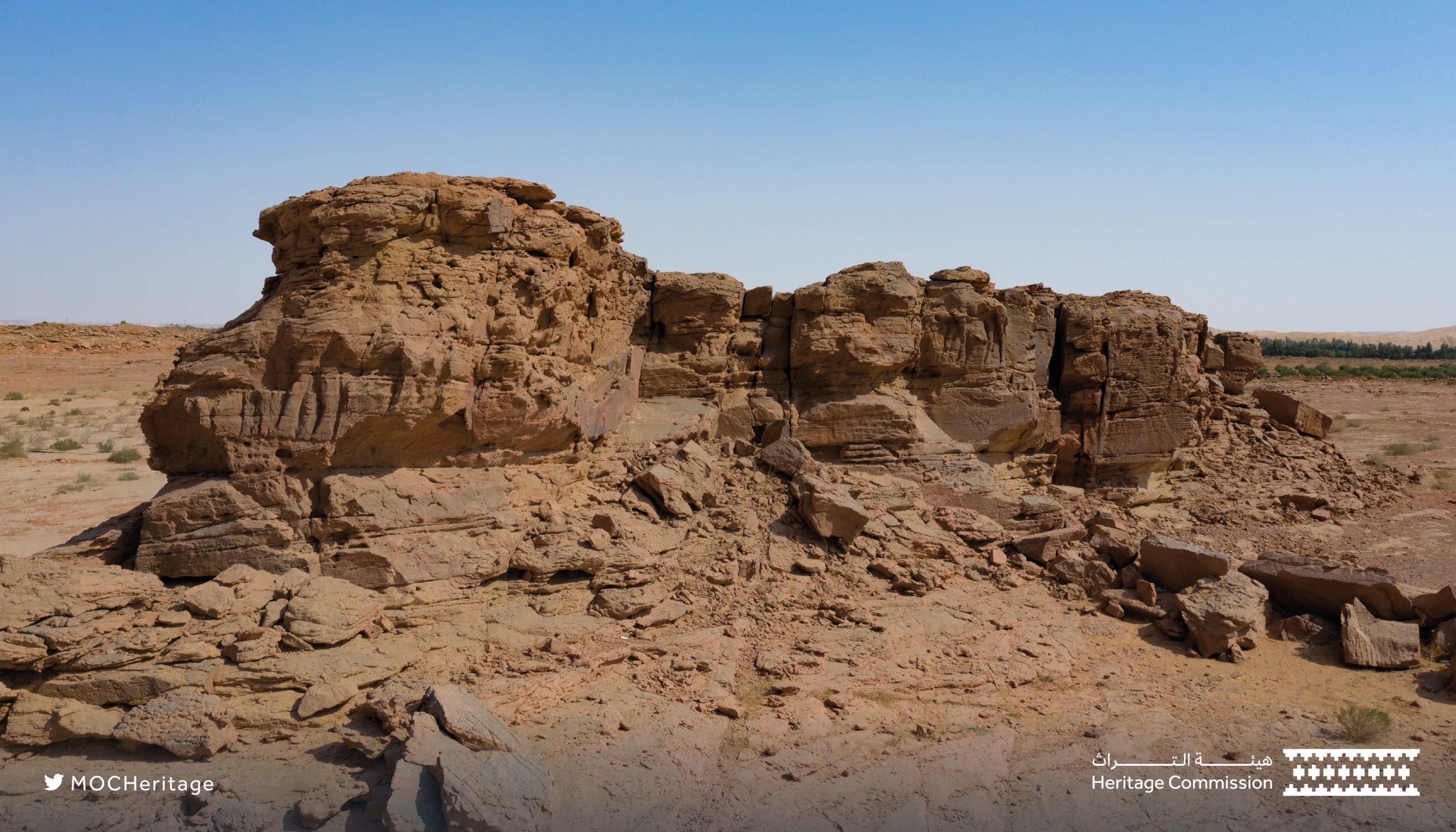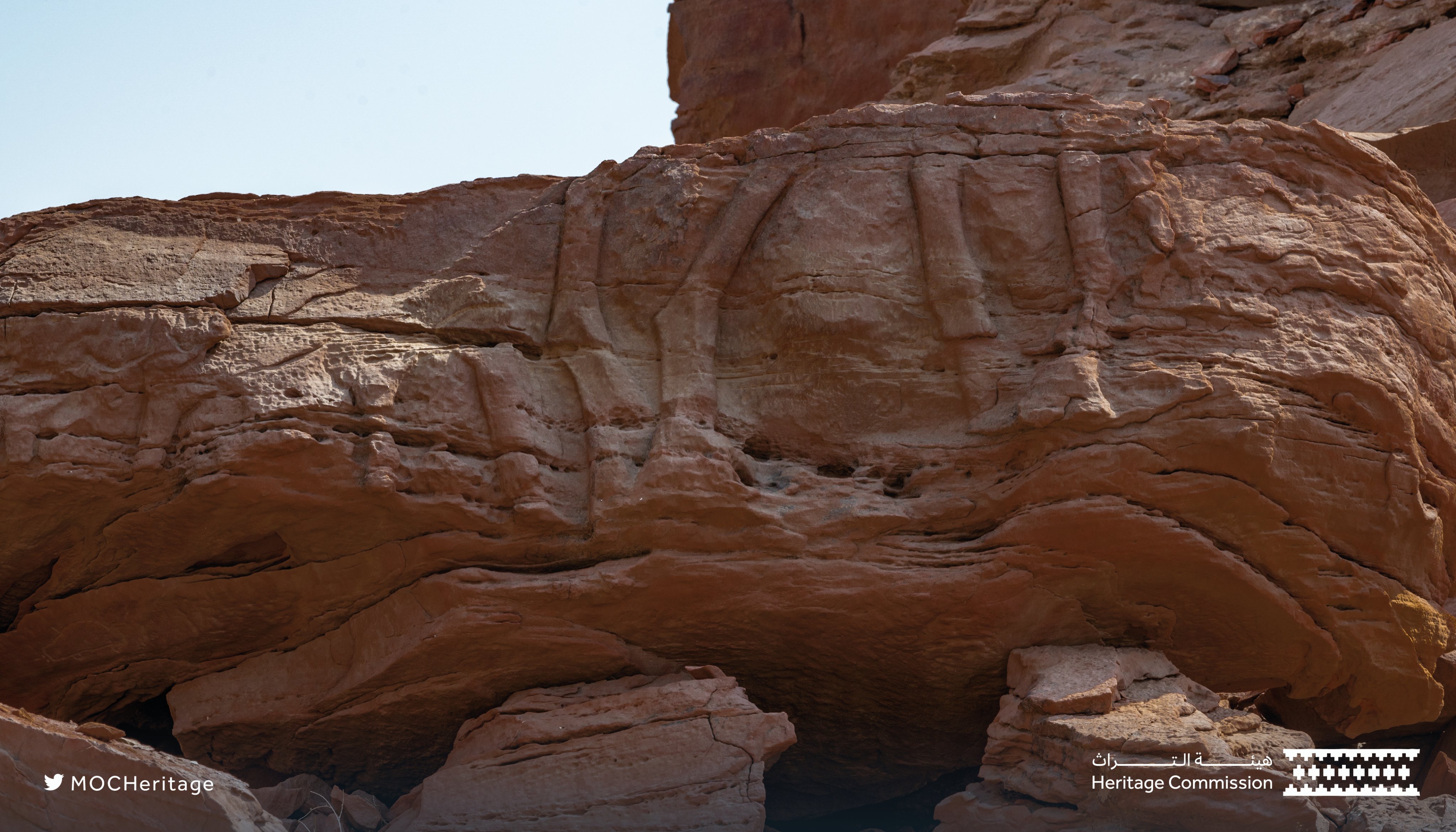Sat 18 September 2021:
According to new research, life-sized engravings of camels and horses hewn into rock faces in Saudi Arabia could be over 7,000 years old, substantially older than previously assumed.
The research, published in the Journal of Archaeological Science on Wednesday, was carried out by the Saudi Ministry of Culture, the Max Planck Institute for the Science of Human History, France’s CNRS research institutes and the King Saud University.
The 21 reliefs, which were only recently discovered, are extensively eroded and were originally estimated to be around 2,000 years old in 2018 based on similarities with artworks uncovered at Jordan’s Petra.
But the new research by Saudi and European institutions used a variety of different methods, including analyzing tool marks and erosion patterns as well as x-ray technology, and suggests the reliefs are around 7,000 to 8,000 years old.
This would mean that the area of carvings, known as the Camel Site, “is likely home to the oldest surviving large-scale (naturalistic) animal reliefs in the world,” the study said.
“We can now link the Camel Site to a period in prehistory when the pastoral populations of northern Arabia created rock art and built large stone structures called mustatil,” the Max Planck Institute for the Science of Human History published a press statement announcing the findings.
“The Camel Site is therefore part of a wider pattern of activity where groups frequently came together to establish and mark symbolic places.”
A stone mason was part of the team, and he estimated that each relief would have taken up to 15 days to carve.
The ‘Camel Site’ in Al Jouf dates back to the Neolithic period, between 5,600 BCE – 5,200 BCE.#SaudiHeritageCommission pic.twitter.com/zwWgeMujQO
— هيئة التراث (@MOCHeritage) September 15, 2021
The authors speculate that the reliefs may have been part of a larger culture of rock art in the area representing life-sized animals, and that they may have been created as part of a Neolithic group’s yearly gathering.
They speculated that the sculptures’ references to the mating season could indicate that they were symbolically tied to the periodic cycles of wet and dry seasons.
The researchers stated that measures to safeguard the site were vital due to widespread erosion of the sculptures.
“Time is running out on the preservation of the Camel Site and on the potential identification of other relief sites as damage will increase and more reliefs will be lost to erosion with each passing year,” said lead author Maria Guagnin, of the Max Planck Institute.
_____________________________________________________________________________
FOLLOW INDEPENDENT PRESS:
TWITTER (CLICK HERE)
https://twitter.com/IpIndependent
FACEBOOK (CLICK HERE)
https://web.facebook.com/ipindependent
Think your friends would be interested? Share this story!







